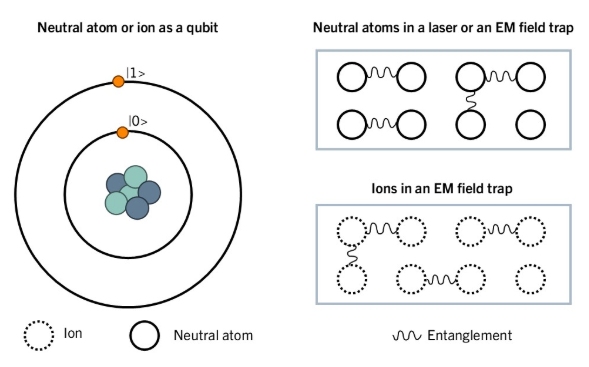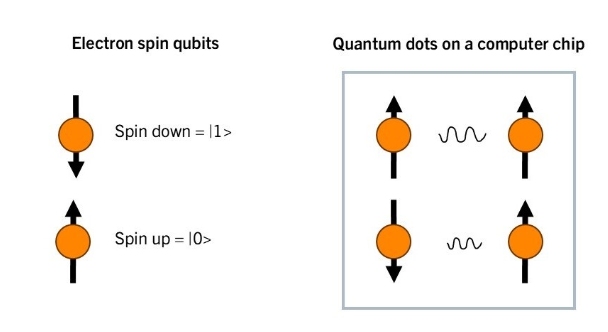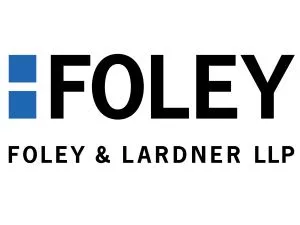- within Coronavirus (COVID-19), Government and Public Sector topic(s)
- with readers working within the Banking & Credit industries
In the previous article titled "The Basics: How Quantum Computers Work and Where the Technology is Heading," we provided an overview of foundational quantum computing concepts, including qubits (quantum bits), superposition, and entanglement. Building on these principles, in this article we will provide an overview of how qubits are implemented in real, physical systems to make quantum computing possible. There are many leading approaches to quantum hardware design, each with different techniques for maintaining qubit stability and minimizing decoherence. Among them, promising approaches include (1) neutral atom quantum computers, (2) trapped ion quantum computers, (3) superconducting quantum computers, and (4) spin qubit quantum computers. We explore the underlying physical systems of each approach, discussing their advantages and trade-offs, while recognizing that the development of each creates different implications.
Neutral Atom Quantum Computers

Neutral atom quantum computers operate using lasers or electromagnetic fields to trap neutral atoms in a localized region. In such systems, neutral atoms serve as qubits by storing quantum information in the energy levels of the atoms' electrons or hyperfine states of the atoms. The internal states of the neutral atoms serve as the logical |0⟩ and |1⟩ states of the qubits.
Precisely controlled laser or electromagnetic pulses are used to manipulate the neutral atoms to initialize the qubits, carry out quantum operations, and perform measurements of their quantum states. Single-qubit operations can be achieved by applying tuned laser or electromagnetic pulses to couple two selected internal energy levels of a single atom. The duration, frequency, and intensity of the pulses can be adjusted to change the qubit's state from |0⟩ or |1⟩, or any superposition in between, to perform different gates with the single atom.
Neutral atom quantum computers can implement two-qubit gates by leveraging the "Rydberg blockade" effect. To do so, lasers or electromagnetic pulses are used to excite a qubit to a high-energy state known as the "Rydberg state." When shifting to this high-energy state, the excited atom shifts the energy levels of neighboring atoms, preventing those neighboring atoms from being excited to similar energy states. The Rydberg blockade effect can be used to establish superposition between two neighboring atoms, producing multi-qubit gates.
Advantages of neutral atom quantum computers include high scalability and uniform qubit characteristics through large arrays of common atoms. Laser and electromagnetic pulses also provide precise control over qubit states. However, trapping and stabilizing neutral atoms is challenging because minor misalignments or power changes in the laser beams can cause atoms to drift or escape. Additionally, all neutral atoms must be maintained in a controlled vacuum environment to prevent decoherence due to collisions with background gases.
Trapped Ion Quantum Computers
In contrast to neutral atom quantum computers, trapped ion quantum computers confine (e.g., immobilize) charged atomic particles (ions) in free space using electromagnetic fields. Motion of each trapped ion is mitigated by laser-cooling the ions to near ground state. Like neutral atom quantum computers, each atom in a trapped ion system operates as a qubit that encodes quantum information in the electronic or hyperfine states of each ion (e.g., using laser or microwave pulses).
Multi-qubit operations are realized in trapped ion quantum computers by coupling the ions' internal qubit states to shared vibrational modes between proximate ions. As the ions are trapped within the electromagnetic field, any vibrational motion of one ion (e.g., induced via laser pulses) causes multiple ions to exhibit quantized motion through Coulomb interactions (i.e., electromagnetic repulsion between the charged ions). With precisely controlled laser or electromagnetic pulses, the induced vibrations can cause selected ions to become entangled, allowing for various multi-qubit gates and quantum operations.
Trapped ion quantum computers have several advantages, including low error rates with long coherence times, high-fidelity quantum gates, extensive possible arrangements of entangled particles (i.e., with each ion in a trap capable of being entangled with any other ion in the trap), along with well-understood and standardized gate schemes that facilitate straightforward implementation of quantum algorithms.
However, these systems typically involve slower processing times compared with systems that use solid-state qubits (e.g., superconducting circuits or silicon-based qubits). Additionally, trapped ion systems typically require complex laser and electromagnetic infrastructure to achieve useful results. Like neutral atom systems, trapped ion systems require controlled vacuum conditions to prevent decoherence due to collisions with background gases or other particles.
Superconducting Quantum Computers

Superconducting quantum computers leverage the properties of superconducting materials to create and control qubits. Superconducting materials, or "superconductors" are materials that can conduct electricity with no resistance or energy loss. Superconductors operate at extremely low temperatures, typically within a few kelvins of absolute zero (e.g., 1 to 20 K or -272 to -253°C). Superconducting quantum computers use a superconductor structure called "Josephson junction" to implement superconducting qubits (e.g., superconducting electronic circuits).
Josephson junctions are thin, insulating barriers positioned between superconducting materials, which can be used to create a variety of different qubits, including transmon qubits and flux qubits. Transmon qubits are created by connecting a Josephson junction in parallel with a relatively large capacitor. This creates a non-linear LC oscillator, which enables the creation of discrete energy levels to implement quantum computing. Quantum information can be encoded in the energy states of transmon qubits using microwave pulses, which induce transitions between the discrete energy levels of the qubit. Transmon qubits can be entangled using capacitive coupling or inductive coupling of adjacent qubits, or through coupling to a common resonator, such as a microwave cavity or transmission line.
On the other hand, flux qubits are formed using a "superconducting loop," or current path, that includes one or more Josephson junctions. Flux qubits encode quantum information in the magnetic flux of each qubit, mediated by the direction of current through the superconducting loop. The current directions (e.g., clockwise or counterclockwise) serve as the logical |0⟩ and |1⟩ states of the qubits. Flux qubits are controlled using a combination of external magnetic flux tuning and electromagnetic pulses. More specifically, the pulses and magnetic flux can be used to externally adjust the state of the qubit, inducing transitions between |0⟩ and |1⟩ states and implementing single-qubit gates. Multi-qubit gates can be achieved through entangling flux qubits via inductive coupling of adjacent qubits, shared Josephson junctions, or coupling to common resonators.
Implementing quantum computers using superconductors has a number of benefits, including very fast gate operations and the ability to manufacture such systems using lithographic techniques that are similar to those used to manufacture conventional semiconductor circuits. Superconducting quantum computers are also easy to scale due to their ease in manufacturing, and benefit from a well-established research community. However, superconducting suffers from limited coherence times and can only operate at ultracold temperatures. Such systems are also susceptible to noise, particularly from crosstalk produced from electromagnetic pulses used to control individual qubits.
Spin Qubit Quantum Computers

Spin qubit quantum computers implement spin qubits, which encode quantum information within the spin of charge carriers (e.g., electrons) in semiconductor materials. Spin is a quantum property of subatomic particles that can be in a superposition of up or down, which can respectively represent the logical |0⟩ and |1⟩ states of the qubits. Quantum information of each electron (e.g., spin-up and spin-down states) can be controlled by rotating the spin of an electron in "quantum dots." Quantum dots are regions within the semiconductor material that confine electrons in all three spatial dimensions. In some systems, donor atoms implanted in semiconductor material, such as atoms of phosphorous implanted within a silicon substrate, can be used to isolate the spin of electrons.
Spin qubits can be controlled using a variety of optical, electromagnetic, or thermal techniques. In some systems, single-qubit gates can be implemented by controlling the state through the application of an oscillating magnetic field tuned to the frequency of the target qubit. Oscillating electric fields may also be used to transition the spin of one or more qubits to a desired state.
Multi-qubit gates can be implemented by providing a tunnel barrier between two quantum dots or donor atoms. The interaction between spins causes the two adjacent electrons to become entangled, which can be used to create gates. The multi-qubit gates can be controlled by applying a voltage across the gate, which affects how the spins of the adjacent electrons interact.
Spin qubit quantum computers have a number of advantages, including long coherence times, small footprint, and compatibility with existing semiconductor manufacturing processes. However, such approaches still require extremely low temperatures to operate (e.g., near absolute zero). Additionally, spin qubit quantum computers suffer from poor scalability due to complex circuitry required to precisely route high-frequency voltage signals to each qubit within the system.
Nitrogen-Vacant Qubits
A promising new paradigm in quantum computing leverages nitrogen-vacancy (NV) centers in diamond to create robust, room-temperature qubits. NV centers are atomic-scale defects in the diamond lattice, consisting of a nitrogen atom adjacent to a vacancy, which exhibit spin-dependent photoluminescence and exceptionally long spin coherence times. These properties allow the NV centers to function as potentially highly stable qubits that can be initialized, manipulated, and read out optically or through microwave fields. Unlike many other quantum systems that require extreme cooling, NV center qubits maintain quantum coherence even at room temperature, opening the door to more practical and scalable quantum devices. Additionally, their sensitivity to magnetic, electric, and thermal environments enables advanced quantum sensing applications alongside quantum computation. This diamond-based approach combines biocompatibility, durability, and potential for integration with existing semiconductor technology, making it a strong candidate for the next generation of quantum technologies.
The Implications
These quantum computing approaches or implementations have different technological advantages, timelines for maturity and commercial readiness, supply chains, potential strategic partnerships, use cases, product impacts, costs, etc., as suggested. Understanding the various implications will be important for assessing impact, strategic and otherwise. As the race for quantum supremacy and for consumer-grade quantum computing intensifies, it will shape investments, strategic decisions, business timelines, and risk analysis. While it is too early to ascertain which approach(es) may achieve dominance, now is the time for strategists, analysts, and decision-makers to become familiar with the candidates.
The content of this article is intended to provide a general guide to the subject matter. Specialist advice should be sought about your specific circumstances.
[View Source]





